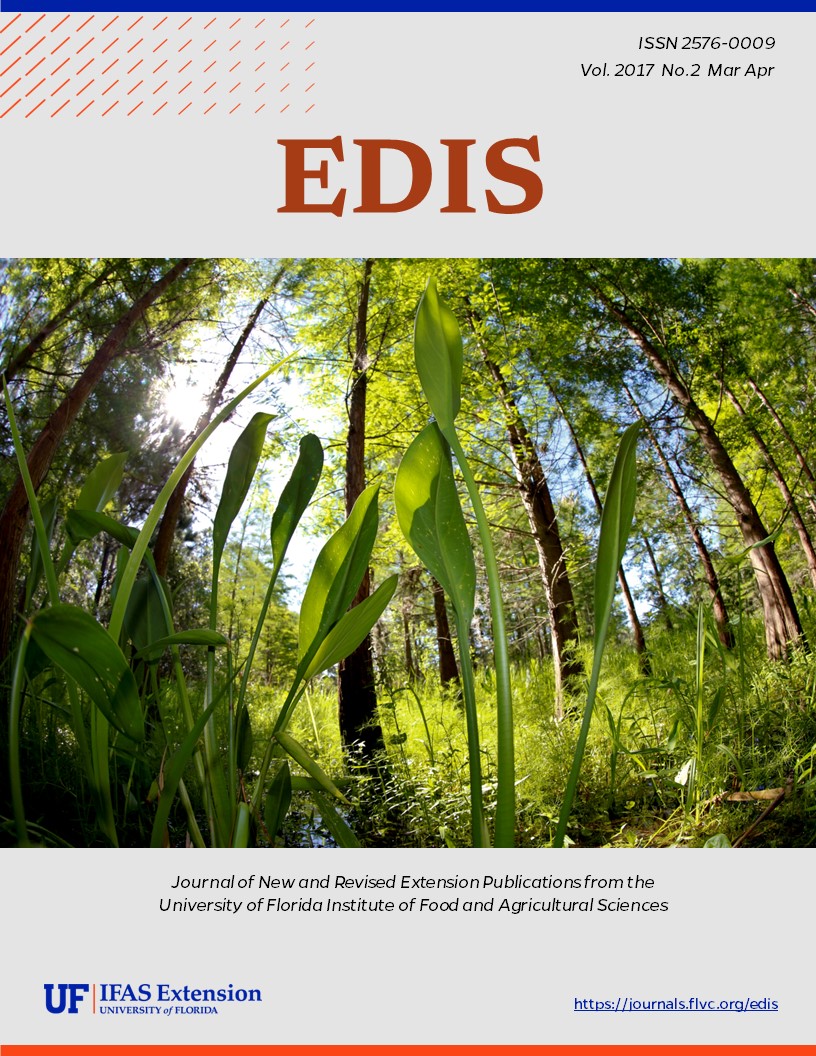Abstract
Neonicotinoid (neonic) pesticides have been facing intense scrutiny because of their potential role in pollinator insect population declines. Research has shown that insecticide use in general has resulted in $284 million per year in damages to honeybee and pollinator services in the United States. This is especially worrying because food supply would fail to meet increasing global food demand without pollinator insects.
Consumer awareness of neonic pesticides increases the purchase likelihood for plants that are labeled “neonic-free,” and, as consumer awareness of neonics increases, demand for plants may decrease if there is limited availability of neonic-free options. This 5-page fact sheet written by Hayk Khachatryan and Alicia Rihn and published by the Food and Resource Economics Department explains the practical implications for growers, retailers, and policy makers and describes how these stakeholders can benefit from increased awareness of this important new market niche.edis.ifas.ufl.edu/fe1008
References
Breeze, T. D., A. P. Bailey, S. G. Pots, and K. G. Balcombe. 2015. "A Stated Preference Valuation of the Non-Market Benefits of Pollination Services in the UK." Ecological Economics 111:76-85. https://doi.org/10.1016/j.ecolecon.2014.12.022
Diffendorfer, J. E., J. B. Loomis, L. Ries, K. Oberhauser, L. Lopez-Hoffman, D. Semmens, B. Semmens, B. Butterfield, K. Bagstad, J. Goldstein, R. Widerholt, B. Mattsson, and W. E. Thogmartin. 2014. "National Valuation of Monarch Butterflies Indicates an Untapped Potential for Incentive-Based Conservation." Conservation Letters 7(3):253-262. https://doi.org/10.1111/conl.12065
Fairbrother, A., J. Purdy, T. Anderson, and R. Fell. 2014. "Risks of Neonicotinoid Insecticides to Honeybees." Environmental Toxicology and Chemistry 33(4):719-731. https://doi.org/10.1002/etc.2527
Gallai, N., J. M. Salles, J. Settele, and B. E. Vaissiere. 2009. "Economic Valuation of the Vulnerability of World Agriculture Confronted with Pollinator Decline." Ecological Economics 68:810-821. https://doi.org/10.1016/j.ecolecon.2008.06.014
Goulson, D. 2013. "An Overview of the Environmental Risks Posed by Neonicotinoid Insecticides." Journal of Applied Ecology 50:977-987. https://doi.org/10.1111/1365-2664.12111
Mwebaze, P., G. C. Marris, G. E. Budge, M. Brown, S. G. Potts, T. D. Breeze, and A. Macleod. 2010. "Quantifying the Value of Ecosystem Services: A Case Study of Honeybee Population in the UK." Proceedings of the BIOECON Conference, Venice, Italy, September 27-28. http://centaur.reading.ac.uk/24838/1/Mwebaze_et_al__2010_UK_honeybee_pollination_valuation.pdf
Pilling, E., P. Campbell, M. Coulson, N. Ruddle, and I. Tornier. 2013. "A Four-Year Field Program Investigating Long-Term Effects of Repeated Exposure of Honey Bee Colonies to Flowering Crops Treated with Thiamethoxam." PLoS ONE 8(10):e77193. https://doi.org/10.1371/journal.pone.0077193
Pimentel, D. 2005. "Environmental and Economic Costs of the Application of Pesticides Primarily in the United States." Environment, Develoment, and Sustainability 7:229-252. https://doi.org/10.1007/s10668-005-7314-2
Rihn, A., and H. Khachatryan. 2016. "Does Consumer Awareness of Neonicotinoid Insecticides Influence Their Preferences for Plants?" HortScience 51(4):388-393. https://doi.org/10.21273/HORTSCI.51.4.388
US-EPA. 2013. "Colony Collapse Disorder: European Bans on Neonicotinoid Pesticides." United States Environmental Protection Agency (US-EPA), Washington, DC. http://www.epa.gov/pesticides/about/intheworks/ccdeuropean-ban.html.
van der Sluijs, J. P., N. Simon-Delso, D. Godson, L. Maxim, J. M. Bonmatin, and L. P. Belzunces. 2013. "Neonicotinoids, Bee Disorders, and the Sustainability of Pollinator Services." Current Opinion on Environmental Sustainability 5:293-305. https://doi.org/10.1016/j.cosust.2013.05.007
Wollaeger, H. M., K. L. Getter, and B. K. Behe. 2015. "Consumer Preferences for Traditional Neonicotinoid-Free, Bee-Friendly, or Biological Control Pest Management Practices on Floriculture Crops." HortScience 50(5):721-732. https://doi.org/10.21273/HORTSCI.50.5.721
Unless otherwise specified, articles published in the EDIS journal after January 1, 2024 are licensed under a Creative Commons Attribution-NonCommercial-NoDerivs 4.0 International (CC BY-NC-ND 4.0) license.

